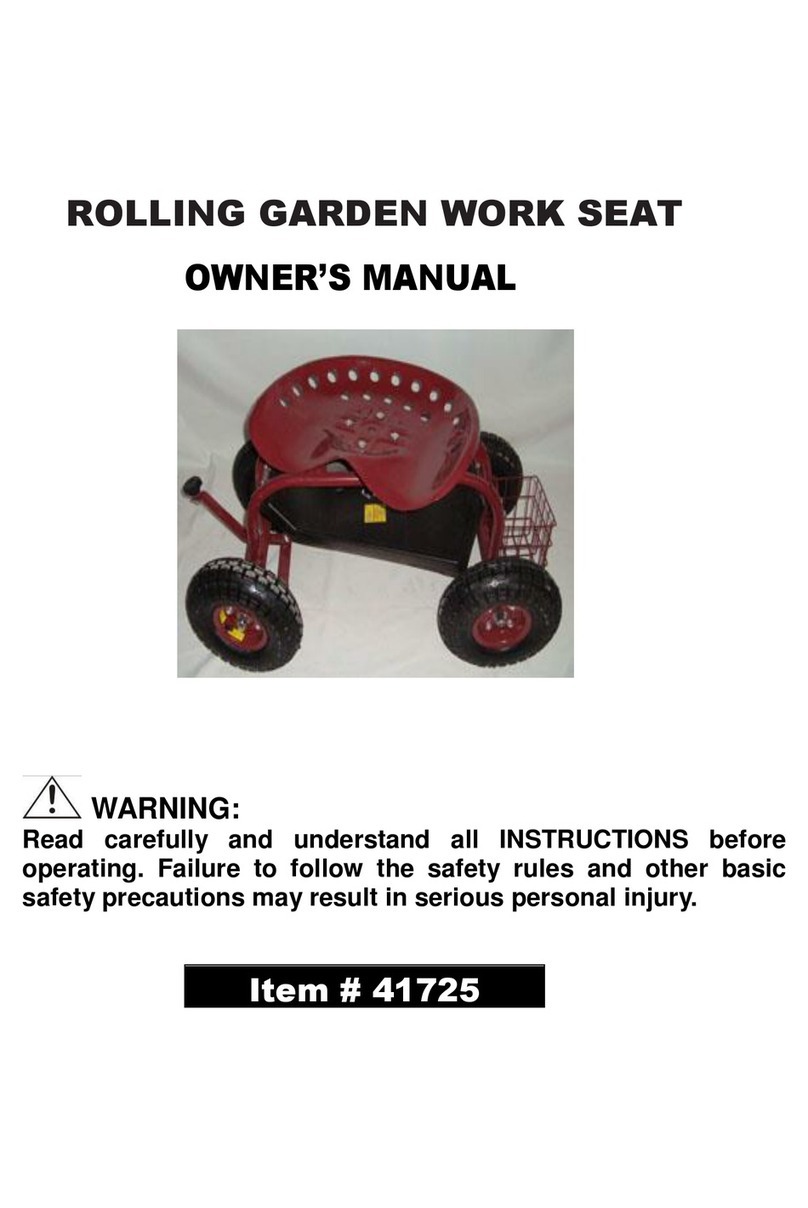Chemical Application Safety
Before Spraying
INSPECT and PREPARE sprayer before each use as directed in this manual.
DO NOT TURN ON POWER to sprayer until ready to spray in order to avoid
unintentional spray release.
DO NOT SPRAY when wind speed exceeds 4 MPH in order to minimize spray drift.
CLEAR work area of people/ pets and POST warning notices to restrict access for the
period recommended on chemical label.
KEEP sprayer and spray materials away from children/pets. Pesticides can be especially
toxic to children and animals.
DO NOT ALLOW anyone younger than 16 to operate sprayer since pesticides are
especially toxic to children.
During Spraying
DO NOT OVER-APPLY pesticide. Apply at rate recommended by chemical manufacturer.
Excess pesticide can be dangerous to humans/animals, damage desirable plants, and
contaminate soil and water sources.
DO NOT EAT, DRINK, SMOKE, RUB YOUR EYES, or TOUCH YOUR BARE SKIN
while handling chemicals and spraying.
NEVER POINT THE SPRAY GUN at people or animals.
EXERCISE EXTRA CAUTION when spraying near areas accessible to children and
pets.
CLEAN up spills immediately per instructions on the chemical label.
TURN OFF vehicle and set brake or block wheels, TURN OFF power to sprayer, and
RELIEVE system pressure before leaving sprayer unattended.
SEE Troubleshooting section of this manual before attempting any repairs. Wear
personal protective equipment and follow safety instructions.
After Spraying
CLEAN sprayer immediately after use according to the directions provided in this manual.
DECONTAMINATE yourself after you are done spraying and have cleaned the sprayer.
Wash all exposed areas of the body with soap and water, and remove and launder clothing.
DISPOSE OF or STORE remaining chemicals in secure storage with correctly marked
container.
ATV Vehicle Handling Safety
DO NOT ALLOW drivers younger than 16 to operate ATV with sprayer attached.
EXERCISE SPECIAL CAUTION in ATV vehicle handling and DO NOT exceed 5
MPH. ATV will be less stable and perform very differently with filled sprayer attached.
Exercise particular caution on sloped or rough surfaces to avoid rollover. Use a vehicle
equipped with rollover protection for use on non-level terrain.
DO NOT RIDE or TRANSPORT cargo on the sprayer.




























